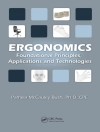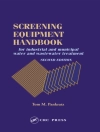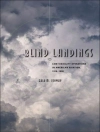The inner architecture of a material can have an astonishing effect on its overall properties and is vital to understand when designing new materials. Nature is a master at designing hierarchical structures and so researchers are looking at biological examples for inspiration, specifically to understand how nature arranges the inner architectures for a particular function in order to apply these design principles into man-made materials.
Materials Design Inspired by Nature is the first book to address the relationship between the inner architecture of natural materials and their physical properties for materials design. The book explores examples from plants, the marine world, arthropods and bacteria, where the inner architecture is exploited to obtain specific mechanical, optical or magnetic properties along with how these design principles are used in man-made products. Details of the experimental methods used to investigate hierarchical structures are also given.
Written by leading experts in bio-inspired materials research, this is essential reading for anyone developing new materials.
قائمة المحتويات
Architectured Materials: An Alternative to Microstructure Control for Structural Materials Design? A Possible Playground for Bio-inspiration?; Bone Structural Adaptation and Wolff’s Law; Understanding Hierarchy and Functions of Bone Using Scanning X-ray Scattering Methods; Advanced Transmission Electron Microscopy to Explore Early Stages of Bio(mimetic)mineralization; Collagen-based Materials for Tissue Repair, from Bio-inspired to Bio-mimetic; Materials Design Inspired by Tree and Wood Architecture; Raman Microscopy: Insights into the Chemistry and Structure of Biological Materials; The Mineralized Crustacean Cuticle: Hierarchical Structure and Mechanical Properties; Multi-scale Modelling of a Biological Material: The Arthropod Exoskeleton; Optical Biomimetics; Magnetic Nanoparticles in Bacteria; Hierarchical Protein Assemblies as a Basis for Materials; Anti-adhesive Surfaces in Plants and Their Biomimetic Potential; Bio-inspired Adhesive Surfaces: From Principles to Applications; Replicating Biological Design Principles in Synthetic Composites; Bio-inspired Self-healing Materials;
عن المؤلف
Peter Fratzl is Director at the Max Planck Institute of Colloids and Interfaces in Potsdam, Germany as well as Honorary Professor at Potsdam University and Humboldt University Berlin. His research interests are in biomimetic materials, including structure function relationships in biological materials and has over 300 publications on in scientific journals and books. Previous awards include an honorary doctorate from the University of Montpellier, France (2010), Gottfried Wilhelm Leibniz-Preis (2010) and together with Professor Robert Langer, MIT, the Max Planck Research Prize for pioneering work in the field of ‘Biological and Biomimetic Materials’ MIT (2008).
John W. C. Dunlop is a research group leader at the Max Planck Institute of Colloids and Interfaces, Germany. His research interests include mechanics of actuating systems, modelling of tissue growth and mechanics of cellular materials.
Richard Weinkamer is a researcher at the Max Planck Institute of Colloid and Interfaces and his scientific interests include structure-function relations and mechanical properties of hierarchically structured biological tissues.












